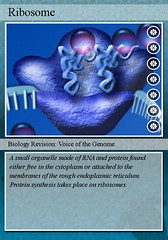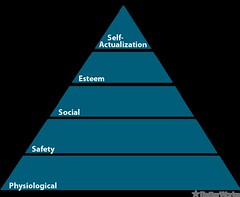| 9834378537 | Adaptation of an animal | animals adapting to be able to live in their environment (ex: a polar bear has white fur for camouflage) |  | 0 |
| 9834378538 | Adaptation of a plant | plants develop adaptations to suit their environment (lily pads/water lilies, cacti have spines instead of leaves) |  | 1 |
| 9834378539 | Abscisic acid | plant hormone that inhibits cell division, and therefore growth | | 2 |
| 9834378540 | Actin | Thin filament of protein found in muscles | | 3 |
| 9834378541 | Amniotic egg | A shelled, water-retaining egg that enables reptiles, birds, and egg-laying mammals to complete their life cycles on dry land | | 4 |
| 9834378542 | Amylase | An enzyme that digests starch into disaccharides. Amylase is secreted by salivary glands and by the pancreas. |  | 5 |
| 9834378543 | Angiosperm | Flowering plants that produce seeds in fruit |  | 6 |
| 9834378544 | Animal that has a segmented body | Segmentation refers to the subdivision along the length of an animal body into a series of repeated parts, or segments. Animals with this characteristic body plan use a growth zone to direct and define the pattern in their segments (ex. arthropods) |  | 7 |
| 9834378545 | Annelid | Earthworm |  | 8 |
| 9834378546 | Anther & filament of stamen | The anther and filament of the stamen is where the pollen is produced and carried until a pollinator comes by and takes the pollen to another flower. The anther is where the pollen is specifically held in the flower, and the filament is a small stem like structure that holds up the anther up higher so that there is a higher chance that a pollinator will come by and some pollen will rub on it so the pollinator can pollinate the next flower it visits or it will be blown away with the wind. |  | 9 |
| 9834378547 | Arthropod | A group of organisms that have jointed appendages, an exoskeleton, bilateral symmetry, and reproduce sexually; insects, arachnids, millipedes and cenitpedes, and crustaceans |  | 10 |
| 9834378548 | Archaebacteria | A group of microorganisms whose cell walls do not contain peptidoglycan and that typically live in extremely harsh environments. | | 11 |
| 9834378549 | Autotroph | Organism that makes its own food |  | 12 |
| 9834378550 | Auxin producing area of a plant | the location of a new flower bud is where auxin is produced. Auxin is a hormone that is made by plants in areas where a new root or shoot is growing | | 13 |
| 9834378551 | Basidiomycete | Mushrooms |  | 14 |
| 9834378552 | Batesian mimicry | Species mimics the appearance of an unpalatable or harmful. |  | 15 |
| 9834378553 | Biological magnification | Increasing concentration of a harmful substance in organisms at higher trophic levels in a food chain or food web | | 16 |
| 9834378554 | Bryophyte | group of plants that have specialized reproductive organs but lack vascular tissue; includes mosses and their relatives |  | 17 |
| 9834378555 | Enzyme | A type of protein that speeds up a chemical reaction in a living thing | | 18 |
| 9834378556 | Calvin cycle | reactions of photosynthesis in which energy from ATP and NADPH is used to build high-energy compounds such as sugars | | 19 |
| 9834378557 | Carbohydrate - fibrous | Plant materials that contain a high level of fiber. Typically referred to as complex carbohydrates, these usually travel through the human reproductive tract without being broken down. |  | 20 |
| 9834378558 | Cambium | A layer of cells in a plant that produces new phloem and xylem cells. |  | 21 |
| 9834378559 | Cellulose | A substance (made of sugars) that is common in the cell walls of many organisms |  | 22 |
| 9834378560 | Chitin | A chemical that provides both toughness and flexibility |  | 23 |
| 9834378561 | Chlorophyta | Green algae |  | 24 |
| 9834378562 | Cnidarian | Jellyfish |  | 25 |
| 9834378563 | Coelomate | An animal that possesses a true coelom (a body cavity lined by tissue completely derived from mesoderm). | | 26 |
| 9834378564 | Conifer leaf | any gymnosperm tree or shrub of the phylum Coniferophyta, typically bearing cones and evergreen leaves. |  | 27 |
| 9834378565 | Commensalism | A relationship between two organisms in which one organism benefits and the other is unaffected |  | 28 |
| 9834378566 | Connective tissue | Animal tissue that functions mainly to bind and support other tissues, having a sparse population of cells scattered through an extracellular matrix. |  | 29 |
| 9834378567 | Cuticle layer of plant | A waxy layer on the outer surface of a plant or an insect, tending to retard water loss. |  | 30 |
| 9834378568 | Deciduous leaf | A leaf from a woody plant that sheds its leaves but does not die. |  | 31 |
| 9834378569 | Deuterostome | group of animals in which the blastopore becomes an anus, and the mouth is formed from the second opening that develops | | 32 |
| 9834378570 | Dicot plant with flower & leaf | A flowering plant with two embryonic seed leaves or cotyledons that usually appear at germination |  | 33 |
| 9834378571 | Diploid chromosome # | lol | | 34 |
| 9834378572 | Echinoderm | A member of a group of slow moving or sessile marine animals characterized by a rough or spiny skin, a water vascular system, an endoskeleton, and a radial symmetry in adults, with examples such as sea stars, sea urchins and sand dollars |  | 35 |
| 9834378573 | Ectotherm | cold blooded |  | 36 |
| 9834378574 | Endosperm | In angiosperms, a nutrient-rich tissue formed by the union of a sperm with two polar nuclei during double fertilization. Provides nourishment to the developing embryo in angiosperm seeds. | | 37 |
| 9834378575 | Endotherm | Absorbs heat | | 38 |
| 9834378576 | Epithelial tissue | A body tissue that covers the surfaces of the body, inside and out |  | 39 |
| 9834378577 | Ethylene | The only gaseous plant hormone. Among its many effects are response to mechanical stress, programmed cell death, leaf abscission, and fruit ripening.1 |  | 40 |
| 9834378578 | Eubacteria | Kingdom of unicellular prokaryotes whose cell walls are made up of peptidoglycan |  | 41 |
| 9834378579 | Eukaryote | Organism whose cells contain a nucleus | | 42 |
| 9834378580 | Exoskeleton | A body covering, typically made of chitin, that provides support and protection |  | 43 |
| 9834378581 | Fermentation | A catabolic process that makes a limited amount of ATP from glucose without an electron transport chain and that produces a characteristic end product, such as ethyl alcohol or lactic acid. |  | 44 |
| 9834378641 | Flower ovary | |  | 45 |
| 9834378582 | Frond | fern leaf; palm or banana leaf |  | 46 |
| 9834378583 | Fruit - dry with seed | Seeds are located in seed pods that can open or stay closed depending on the variety. Nuts are an example. |  | 47 |
| 9834378584 | Fruit - fleshy with seed | Made of living cells and are often juicy and sweet tasting. The most common examples are most forms of berries you find at a typical grocery store. |  | 48 |
| 9834378585 | Gametophyte | Haploid, or gamete-producing, phase of an organism | | 49 |
| 9834378586 | Gastropod | A mollusk with a single shell or no shell. |  | 50 |
| 9834378587 | Genetically modified organism | Foods that are mostly products or organisms that have their genes altered in a laboratory for specific purposes, such as disease resistance, increased productivity, or nutritional value allowing growers greater control, predictability, and efficiency. |  | 51 |
| 9834378588 | Gibberellins | A class of related plant hormones that stimulate growth in the stem and leaves, trigger the germination of seeds and breaking of bud dormancy, and stimulate fruit development. | | 52 |
| 9834378589 | Glycogen | An extensively branched glucose storage polysaccharide found in the liver and muscle of animals; the animal equivalent of starch. | | 53 |
| 9834378590 | Gymnosperm cone | Seed plants that do not produce flowers or fruits; one of the two major groups of living seed plants. |  | 54 |
| 9834378591 | Haploid chromosome number | # in reproductive cells - half of diploid chromosome # | | 55 |
| 9834378592 | Heartwood | Older xylem near the center of a woody stem that no longer conducts water |  | 56 |
| 9834378593 | Hermaphrodite | An individual that functions as both male and female in sexual reproduction by producing both sperm and eggs. |  | 57 |
| 9834378594 | Insect | LADYBUG |  | 58 |
| 9834378595 | K-strategist | reproductive strategy in which organisms reproduce late, bear few, cared for offspring (ex. humans, elephants). |  | 59 |
| 9834378596 | Keratin | A fiber protein that is the principal component of hair, skin, and nails is: | | 60 |
| 9834378597 | Leaf - gymnosperm | From plants that have seeds unprotected by ovary or fruit. Most common forms are conifers (ex. are evergreen trees) and cycads (ex. are palm trees). |  | 61 |
| 9834378598 | Lepidoptera | Butterflies and moths |  | 62 |
| 9834378599 | Lichen | An organism made of a fungus and either algae or autotrophic bacteria that live together in a mutualistic relationship. |  | 63 |
| 9834378600 | Lignin | substance in vascular plants that makes cell walls rigid |  | 64 |
| 9834378601 | Lipid used for energy storage | A fatty or waxy organic compound that is readily soluble in nonpolar solvent (e.g. ether) but not in polar solvent (e.g water). Its major biological functions involve energy storage, structural component of cell membrane, and cell signaling | | 65 |
| 9834378602 | Littoral zone organism | Organisms that live in a zone that is characterized by abundant dissolved oxygen, sunlight, nutrients, generally high wave energies and water motion, and, in the intertidal subzone, alternating submergence and exposure. |  | 66 |
| 9834378603 | Long-day plant | A plant that flowers only when the light period is longer than a critical length. Usually spring or early summer. | | 67 |
| 9834378604 | Meristem | Plant tissue that remains embryonic as long as the plant lives, allowing for indeterminate growth. | | 68 |
| 9834378605 | Modified leaf of a plant | adaptation of plant meant for its own survival and adapted due to its environmental stress |  | 69 |
| 9834378606 | Modified root of a plant | Roots that have special functions to perform and in such cases their form and structure differ from those of normal roots (beets, carrots) | | 70 |
| 9834378642 | Modified steam of a plant | | | 71 |
| 9834378607 | Monocot plant with flower and leaf | (e.g. corn seeds,blade of grass,tulip,lily) A group of flowering plants belonging to the class Liliopsida (or Monocotyledonae) of Angiospermae (angiosperms), characterized by having only one cotyledon in the seed and an endogenous manner of growth | | 72 |
| 9834378608 | Muscle fiber - striated | a muscle that is connected at either or both ends to a bone and so move parts of the skeleton; a muscle that is characterized by transverse stripes |  | 73 |
| 9834378609 | Mutualism | A relationship between two species in which both species benefit |  | 74 |
| 9834378643 | Mycelium | |  | 75 |
| 9834378610 | Mycorrhizae | A mutualistic association of plant roots and fungus |  | 76 |
| 9834378611 | Myosin | Thick filament | | 77 |
| 9834378612 | Nematode | Roundworm | | 78 |
| 9834378613 | Niche | Full range of physical and biological conditions in which an organism lives and the way in which the organism uses those conditions |  | 79 |
| 9834378614 | Nymph stage of an insect | pre-adult stage, before insect goes thru metamorphosis; usually stage when insect hatches from egg |  | 80 |
| 9834378615 | Parasite | An organism that feeds on a living host |  | 81 |
| 9834378616 | Parenchyma cells | ground tissue cells that have small vacuoles, and thin walls and cytoplasm |  | 82 |
| 9834378617 | Phloem | Living vascular tissue that carries sugar and organic substances throughout a plant |  | 83 |
| 9834378618 | Pine cone - female | The familiar woody type cone found on conifer trees. The female cones are the most recognizable are contain seeds which can be fertilized by the pollen produced by male cones. | | 84 |
| 9834378619 | Platyhelminthes | Flatworms |  | 85 |
| 9834378620 | Pollen | A fine dust that contains the sperm of seed-producing plants |  | 86 |
| 9834378621 | Pollinator | an insect that carries pollen from one flower to another |  | 87 |
| 9834378622 | Porifera | Sponges |  | 88 |
| 9834378623 | Prokaryote | No nucleus | | 89 |
| 9834378624 | Protein - fibrous | Any of numerous protein having fibrous rather than tuberous or rhizomatous roots. Have primary and secondary structure. | | 90 |
| 9834378625 | Protein - globular | are more likely to be water soluble, these have tertiary and quaternary structure in addition to primary and secondary | | 91 |
| 9834378626 | Protostome | an animal whose mouth is formed from the blastopore | | 92 |
| 9834378627 | Pteridophyte | Ferns
Seedless plants with true roots with lignified vascular tissue. The group includes ferns, whisk ferns, and horsetails. |  | 93 |
| 9834378628 | R-strategist | reproductive strategy in which organisms reproduce early, bear many small, unprotected offspring (ex. insects, mice). |  | 94 |
| 9834378629 | Radula | A flexible ribbon of tiny teeth in mollusks |  | 95 |
| 9834378630 | Rhizome | an underground stem |  | 96 |
| 9834378631 | Scale from animal with two-chambered heart | Fish Scale |  | 97 |
| 9834378632 | Spore | A reproductive cell with a hard, protective coating |  | 98 |
| 9834378633 | Sporophyte | Diploid, or spore-producing, phase of an organism | | 99 |
| 9834378634 | Stem - herbaceous | plants with this feature has leaves and stems that die down at the end of the their growing season and do not leave woody stems above ground (grasses are an example) |  | 100 |
| 9834378635 | Stem - woody | plants with this feature produce wood as a primary structural component (trees are examples) |  | 101 |
| 9834378636 | Stigma & style of carpel | One of the structural units of a pistil, representing a modified, ovule-bearing leaf; (stigma, style, ovary) |  | 102 |
| 9834378637 | Tendril of a plant | special stem or leaf of a plant with special shape that makes it more supportive |  | 103 |
| 9834378638 | Thorn of a plant | A modified plant organ, especially a stem, that is stiffened and terminates in a sharp point. |  | 104 |
| 9834378639 | Unicellular organism | An organism made up of one cell. | | 105 |
| 9834378640 | Vascular plant tissue | cambium cells |  | 106 |




























































































































































































































































































